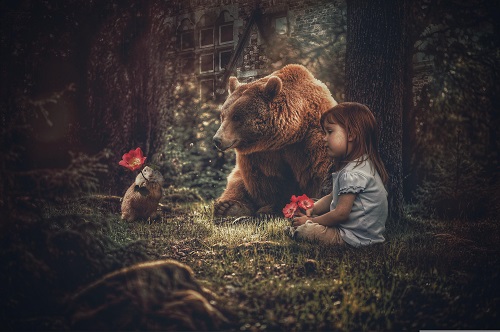First Impression Matters: In the digital realm, where competition for consumer attention is fierce, the initial impression a brand makes is often the deciding factor. In whether a potential customer engages further or moves on. Eye-catching images serve as the gateway to deeper engagement,. Making it perative for businesses to prioritize visual appeal in their marketing efforts.
Interrupting the Scroll: With the rise of social media and endless scrolling. Users are constantly bombarded with content vying for their attention. Captivating imagery has the unique ability to disrupt this pattern. By standing out amidst the sea of information, compelling users to pause their scrolling and take notice.

Encouraging Curiosity:
Humans possess a natural inclination towards visuals that provoke curiosity and ignite the imagination. Whether it’s a mysterious silhouette, a compelling arrangement, or a striking landscape, intriguing images evoke a sense of wonder. That motivates viewers to delve deeper into the content.
Visual Storytelling: Images have the power to convey complex narratives and emotions in a fraction of a second. By telling a compelling visual story, businesses can elicit an emotional response from their audience. Forging a deeper connection that resonates beyond mere product features or benefits.
Stirring Emotions: Studies indicate that emotions wield considerable influence in consumer decision-making processes. Visually captivating content capable of eliciting positive emotions like joy, excitement, or nostalgia can leave a favorable imprint of the brand. Heightening the probability of conversion.
Standing Out in a Crowded Market:
In saturated markets where differentiation is key. Striking visuals can serve as a powerful differentiator. Whether it’s through bold colors, unique compositions, or innovative concepts. Visually distinctive content sets a brand apart from competitors and leaves a lasting impression on viewers.

Immediate Satisfaction: In the hustle of modern life, consumers yearn for instant gratification and swift fulfillment. Visually appealing content meets this demand by offering an immediate sensory delight. This seizes the audience’s attention and satisfies their hunger for compelling, enjoyable experiences.
Universal Language: Visuals transcend linguistic and cultural barriers, making them accessible to a global audience. Whether a brand is targeting local markets or expanding internationally. Compelling imagery ensures that its message resonates with diverse audiences across geographical and cultural boundaries.
Memorable Brand Recall: The human brain processes visual information much faster and retains it more effectively than text. By imprinting their brand identity through memorable visuals, businesses increase the likelihood of brand recall and recognition. Fostering long-term brand loyalty and repeat purchases.
Driving Click-Throughs and Conversions:
Ultimately, the primary objective of capturing attention through visually appealing content is to drive action. Whether it’s clicking on a call-to-action button, exploring a product catalog, or making a purchase. Compelling imagery serves as a powerful catalyst for driving click-throughs and conversions. Ultimately contributing to the bottom line of the business.
Fostering Visual Hierarchy: Effective visual communication relies on establishing a clear hierarchy of information within an image. By strategically placing focal points. Using contrasting colors, and employing visual cues. Such as arrows or icons, businesses can guide viewers’ attention towards key elements and messages. Ensuring that their content is both visually engaging and informative.
Harnessing Gestalt Principles: Drawing from Gestalt psychology, principles like proximity, similarity, and closure provide invaluable guidance for crafting Visually appealing content with engaging compositions that seize viewers’ interest and prompt exploration. By arranging elements in a cohesive and harmonious manner, businesses enhance the visual appeal of their content. Thus simplify comprehension, encouraging deeper engagement with their audience.

Utilizing Negative Space: Negative space, or white space, serves as a pivotal tool in guiding attention and refining visual clarity. Through strategic integration of vacant areas surrounding focal points, businesses achieve a harmonious, refined, and sophisticated visual aesthetic. This technique draws viewers’ gaze towards essential elements while minimizing visual clutter, ensuring effective communication of key messages.
Adhering to Design Principles:
Good design principles such as balance, symmetry, and harmony are fundamental to creating visually appealing content that resonates with viewers. Whether it’s through the use of grid systems, typography, or color theory. Adhering to these principles ensures that marketing pictures are not only aesthetically pleasing but also effective. In conveying the intended message and brand identity.
Enhancing Accessibility: Embracing inclusive design principles guarantees that marketing visuals cater to users with disabilities, particularly those with visual impairments. By offering alternative text descriptions. Employing high-contrast color schemes, and utilizing resizable images. All users can access and interact with content, thereby broadening the influence and effectiveness of visual marketing endeavors.
Staying Consistent Across Channels: Consistency is key to building a strong and recognizable brand identity. Especially across various digital channels and touchpoints. By maintaining a cohesive visual style, color palette, and brand aesthetic, businesses reinforce their brand message. Therefore, increase the likelihood of being remembered and recognized by consumers, regardless of where they encounter the brand online.
Testing and Iterating for Optimization:
The effectiveness of marketing pictures can be further enhanced through iterative testing and optimization. A/B testing different visual elements, formats, and variations allows businesses to identify what resonates most with their target audience. Then refine their visual marketing strategies accordingly, maximizing engagement and conversion rates over time.
Adapting to Evolving Trends: Keeping pace with evolving visual trends and consumer preferences is essential for staying relevant in today’s fast-changing digital landscape. Whether it’s embracing new design styles, incorporating emerging technologies such as augmented reality (AR) or virtual reality (VR), or tapping into cultural phenomena, businesses must remain agile and adaptive in their approach to visual marketing to capture and retain audience attention.
Crafting Authentic Narratives: In the realm of consumer perceptions and brand loyalty, authenticity holds ever-growing significance. When businesses weave genuine stories through visually captivating content, they forge connections with their audience on a deeply human level. By spotlighting real individuals, authentic experiences, and relatable narratives, businesses cultivate profound connections that foster trust, empathy, and rapport, driving a lasting affinity for the brand.
Embracing Creativity and Innovation: Finally, embracing creativity and pushing the boundaries of innovation is key to creating memorable and impactful marketing pictures that capture attention and leave a lasting impression. By experimenting with new techniques, formats, and mediums, businesses can break through the noise, spark curiosity, and inspire action, ultimately driving greater engagement, loyalty, and sales.

A little something I have used from the very beginning of my book publishing career. Click the image above for a discount…